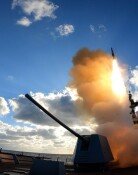Is the market recovering thanks to ban on short-selling?
Is the market recovering thanks to ban on short-selling?
Posted June. 20, 2020 07:55,
Updated June. 20, 2020 07:55
Following the pandemic declaration of the World Health Organization, the stock markets around the world plummeted. Meanwhile, a few countries decided to control short-selling by utilizing the economic crisis caused by COVID-19 despite its well-known importance through various channels. Investors are also angry with short-selling, mainly because of the belief that the trading practice disrupts prices. Adding the economic crisis into the mix, the reasons to connect stock price falls with short-selling seemed obvious. Hence, it must have been only natural for the Financial Services Commission to ban short-selling, at least temporarily. As the stock market is quickly recovering, more and more people are calling for the permanent abolition of short-selling on the ground that it destroys prices.
However, it would be premature and naive to assume that the regulation is effective as stock prices have recovered beyond the pre-regulation levels. The market is not in the same place now with the declaration of a pandemic. For example, the S&P 500 of the U.S. and the Nikkei 225 of Japan – the two countries that did not ban short-selling in the face of the COVID-19 outbreak – rose 27.6 percent and 28.7 percent, respectively, for the 50 days since the ban on short-selling was enforced. Is the ban not effective because their stock prices still went up without it? It doesn’t seem completely ineffective given that KOSDAQ increased 41.5 percent, but Kospi only rose 18.4 percent during the same period, which is lower than the U.S. and Japan. There is no need to feel confused. It simply means that measuring the effectiveness of the short sale ban is impossible by directly comparing the pre-ban and post-ban rates of return.
To avoid such a basic mistake, it is essential to compare the prices of stocks subject to the ban and those of stocks exempt from the ban. Although the recent regulation is temporary, it has been applied to all stocks. Therefore, it may be a good alternative to compare the stocks expected to benefit much from the ban and the ones that will be less affected by the ban. A recently published article reads stocks that avoided the “shower” of short-selling went up significantly in prices. The article claims that the stocks whose short sales account for a large share – meaning, the stocks assumed to be benefiting from the ban – have recorded high rates of return for the three months after the ban, citing the examples of three KOSDAQ-listed companies that achieved the return rate of 19, 63, and 39 percent, respectively. According to the article, another company that had struggled a lot with short-selling recorded the return rate of 33.4 percent.
Something is odd here, though. The pitfall is that KOSDQA, which includes all stocks that may be benefitting less from the ban, rose 70 percent during the same period. Then, the right question to ask is why the stocks that most benefit from the ban only recorded such low rates of return compared to the overall market that includes all stocks, rather than marveling at the stock price increase after the short-selling ban.
It is too early to judge the impact of the short-selling ban and come up with a conclusion in the urgent economic crisis at the moment. However, the issue of short-selling is too important to determine its fate based on premature discussions. I fully understand how frustrating short-selling can be. However, it doesn’t make sense to get rid of crosswalks because of frequent traffic accidents – it would be not necessary to reiterate the positive functions of crosswalks here.







